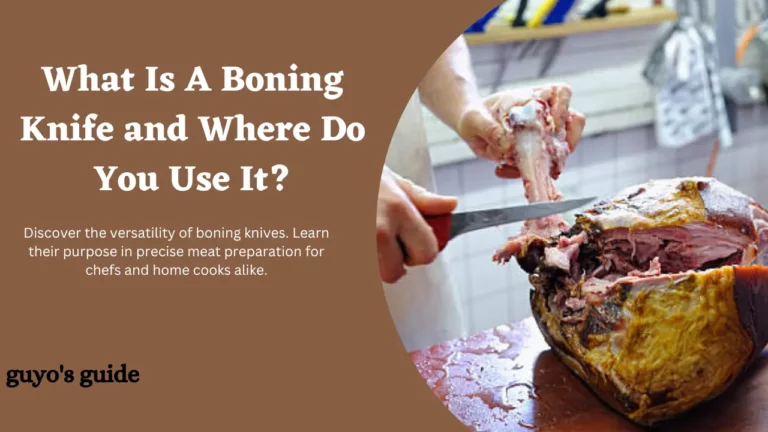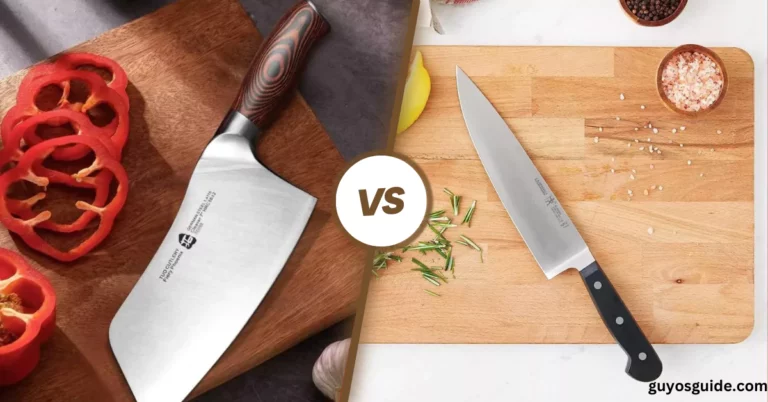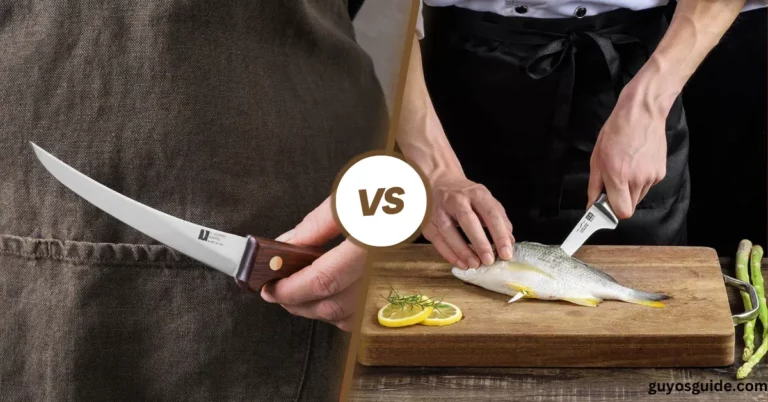What Is A Santoku Knife Best For?
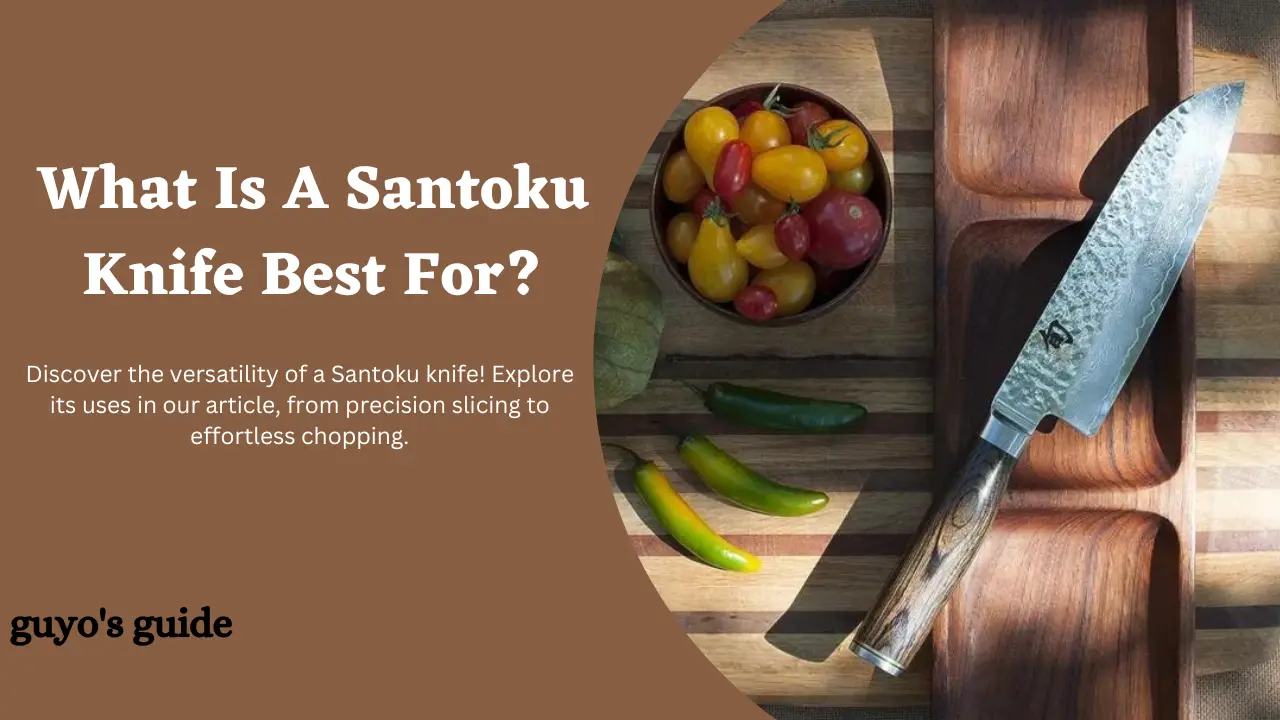
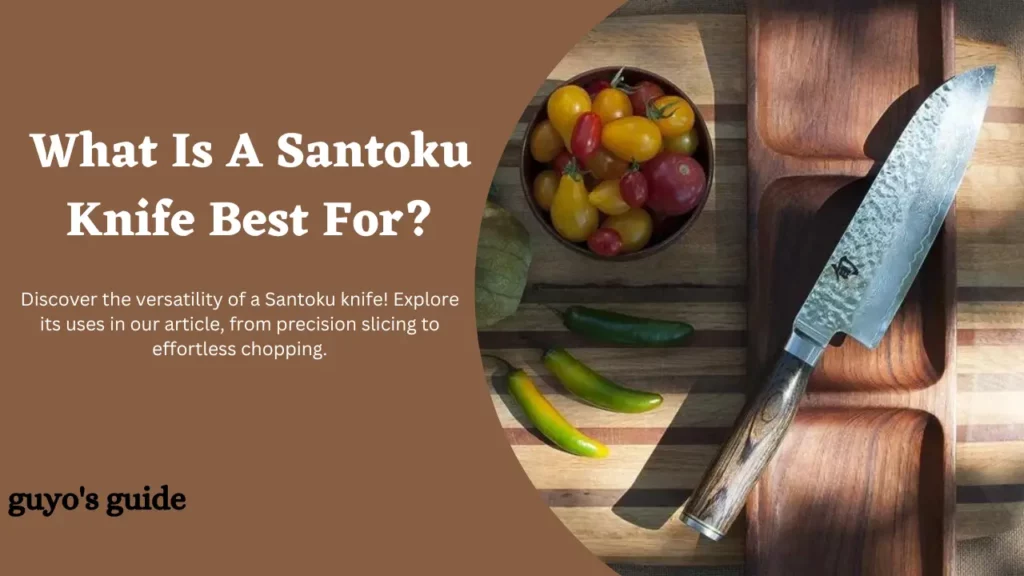
The Santoku knife is a versatile tool that has gained popularity in recent years. With its unique design and functionality, it has become a staple in many kitchens. But what exactly is a Santoku knife best for?
In this blog post, we will explore the various uses of this Japanese knife, from chopping and slicing to dicing and mincing.
Whether you’re a professional chef or a home cook, understanding the capabilities of a Santoku knife will undoubtedly elevate your culinary skills.
So, let’s dive in.
Uses Of A Santoku Knife
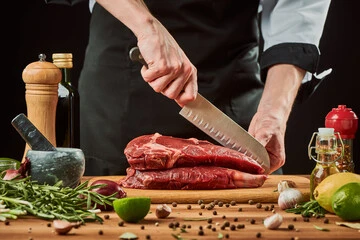
A Santoku knife is a versatile and popular kitchen knife with its origins in Japan. It has a distinct shape and design that makes it suitable for a variety of cutting tasks. Here are some common uses of a Santoku knife:
1. Slicing
Santoku knives are excellent for slicing tasks, such as cutting thin slices of vegetables, fruits, or boneless meats. The sharp blade and straight edge make it easy to create uniform slices.
2. Dicing
The Santoku knife’s narrow blade and sharp tip allow for precise dicing of ingredients like onions, garlic, and herbs.
3. Chopping
Santoku knives are well-suited for chopping herbs, nuts, or small vegetables due to their shorter, broad blade, which provides stability and control.
4. Mincing
The fine, sharp edge of a Santoku knife makes it ideal for mincing garlic, ginger, shallots, and other aromatics.
5. Julienne
You can use a Santoku knife to create thin, uniform julienne strips of vegetables like carrots, bell peppers, or zucchini.
6. Meat preparation
While not ideal for heavy-duty tasks like cutting through bones, Santoku knives can handle slicing, trimming, and portioning boneless meats, such as chicken breasts or pork chops.
7. Fish filleting
Santoku knives can be used to fillet fish due to their precision and sharpness. However, a dedicated fillet knife may be more suitable for larger fish.
8. Sushi and sashimi
Santoku knives are sometimes used for slicing sushi rolls and sashimi. However, sushi chefs often prefer specialized Japanese knives like Yanagiba or Sashimi knives for these tasks.
9. General utility
The Santoku’s versatility makes it a go-to knife for everyday kitchen tasks, from cutting sandwiches to slicing cheese.
Tip: It’s important to note that while Santoku knives can handle a wide range of cutting tasks, they may not be the best choice for heavy-duty cutting, such as breaking down large pieces of meat with bones. For such tasks, a cleaver or a chef’s knife with a thicker and sturdier blade might be more suitable.
Features of A Santoku Knife
A Santoku knife is a popular Japanese kitchen knife known for its versatility and functionality. It typically has several distinctive features that set it apart from other types of knives:
Blade Shape
The Santoku knife typically has a relatively short, wide, and flat blade with a slightly curved edge. This blade shape allows for a more straight up-and-down chopping motion compared to the rocking motion of a Western chef’s knife.
Blade Length
The blade of a Santoku knife typically ranges from 5 to 7 inches (about 13 to 18 cm). This size makes it suitable for a wide range of kitchen tasks.
Double-Beveled Edge
Most Santoku knives have a double-beveled edge, which means they are sharpened on both sides of the blade. This makes them suitable for both right-handed and left-handed users.
Hollow Edge (Granton Edge)
Many Santoku knives feature small oval-shaped indentations along the side of the blade, called a Granton edge or hollow edge. These indentations reduce friction between the blade and the food being sliced, allowing for smoother and cleaner cuts.
Multipurpose Use
The word “Santoku” translates to “three virtues” or “three uses” in Japanese, referring to the knife’s versatility. It is designed for slicing, dicing, and chopping a wide variety of ingredients, including fruits, vegetables, and boneless meats.
Thin Blade
Santoku knives typically have thin blades that are well-suited for precision cutting and slicing. This thinness helps reduce resistance when slicing through food.
Pointed Tip
While the tip of a Santoku knife is not as pointed as that of a Western chef’s knife, it is still relatively sharp and can be used for more delicate tasks like scoring, detailing, or making intricate cuts.
Balanced Weight
A well-designed Santoku knife is typically well-balanced, with the weight distributed evenly between the blade and the handle. This balance makes it comfortable to use for extended periods.
High-Quality Materials
High-quality Santoku knives are often made from high-carbon stainless steel, which provides excellent edge retention and resistance to staining and corrosion. Some traditional versions may also use carbon steel.
Ergonomic Handle
The handle of a Santoku knife is designed for a comfortable grip, often with a slight curve for ergonomic support. Handles can be made from various materials, including wood, synthetic materials, or even metal.
Maintenance
Like all knives, Santoku knives require proper care and maintenance. Regular sharpening is necessary to keep the blade sharp, and it should be hand-washed and dried immediately after use to prevent corrosion.
Real-Life Applications and Recipes for a Santoku Knife
Real-life applications and recipes for a Santoku knife are vast, as it is a versatile kitchen tool suitable for various cutting tasks. Here are some real-life applications and recipes where a Santoku knife shines:
Stir-Fry

Use the Santoku knife to efficiently chop and slice vegetables like bell peppers, carrots, broccoli, and onions for a quick and delicious stir-fry. The precise cuts will ensure even cooking and a visually appealing presentation.
Sushi and Sashimi
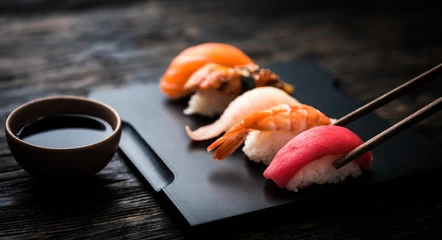
A Santoku knife is commonly used in Japanese cuisine to prepare sushi and sashimi. It can easily slice through raw fish and create clean, precise cuts for the perfect sushi rolls or sashimi platter.
Salad Preparation

The Santoku knife is excellent for chopping lettuce, cabbage, and other greens for salads. Its versatility allows you to handle various salad ingredients like cucumbers, tomatoes, and radishes.
Vegetable Medley

Create a colorful and flavorful vegetable medley by using the Santoku knife to dice and slice a combination of your favorite veggies. For a healthy side dish, this can be roasted, stir-fried, or sautéed.
Fruit Salad

Prepare a refreshing fruit salad using the Santoku knife to cut and cube various fruits like melons, berries, kiwi, and citrus. The sharp edge will make the task quick and easy.
Minced Herbs

The Santoku’s sharp blade and Granton edge are perfect for mincing fresh herbs like basil, cilantro, parsley, or mint. Add the minced herbs to your sauces, dressings, or garnish for an extra burst of flavor.
Meat and Poultry

Use the Santoku knife to slice, dice, and portion meat and poultry for various dishes. It can handle tasks like slicing chicken breasts for stir-fries or dicing beef for stews.
Homemade Salsa
With your Santoku knife, prepare a delicious homemade salsa by chopping tomatoes, onions, jalapenos, and cilantro. The precise cuts will result in well-balanced and textured salsa.
FAQs
What is a Santoku knife best for?
A Santoku knife is best for a variety of kitchen tasks, including slicing, dicing, and chopping. It excels at precision cutting of vegetables, fruits, boneless meats, and fish.
Can a Santoku knife be used for slicing bread?
While Santoku knives can slice bread, they are not the best choice for this task. Bread knives with serrated edges are more suitable for cleanly slicing through bread without crushing it.
Is a Santoku knife suitable for cutting through bones or frozen foods?
No, a Santoku knife is not designed for cutting through bones or frozen foods. Attempting to do so can damage the blade or even cause injury. For such tasks, it’s better to use a cleaver or a specialized bone-cutting knife.
Can I use a Santoku knife to fillet fish?
Santoku knives can be used for filleting fish, especially smaller varieties. However, for larger fish or precision filleting, a dedicated fillet knife with a flexible blade might be more suitable.
What are the advantages of using a Santoku knife over a chef’s knife?
Santoku knives have a shorter, wider blade with a flatter edge profile, which makes them excellent for precise slicing and chopping. They are often preferred for tasks like fine vegetable work and are lighter and more maneuverable than typical chef’s knives.
Can I use a Santoku knife for mincing herbs and garlic?
Yes, a Santoku knife is great for mincing herbs and garlic due to its precision and sharpness. Its flat edge allows for a rocking motion that facilitates mincing.
Is a Santoku knife dishwasher safe?
While some Santoku knives may claim to be dishwasher safe, it’s generally recommended to hand wash them. Dishwashers can be harsh on knife blades and handles, potentially causing damage and reducing their lifespan.
Wrap Up
The Santoku knife is a versatile kitchen tool that excels at slicing, dicing, and chopping. Its unique design and balanced weight make it ideal for a wide range of tasks, from delicate herbs to hearty vegetables and proteins.
Whether you’re a professional chef or a home cook, adding a Santoku knife to your culinary arsenal can elevate your cooking experience.
Its precision and efficiency make it a must-have for anyone looking to achieve restaurant-quality results in their own kitchen.
So, if you’re in search of a reliable all-purpose knife, the Santoku is undoubtedly a cut above the rest.



